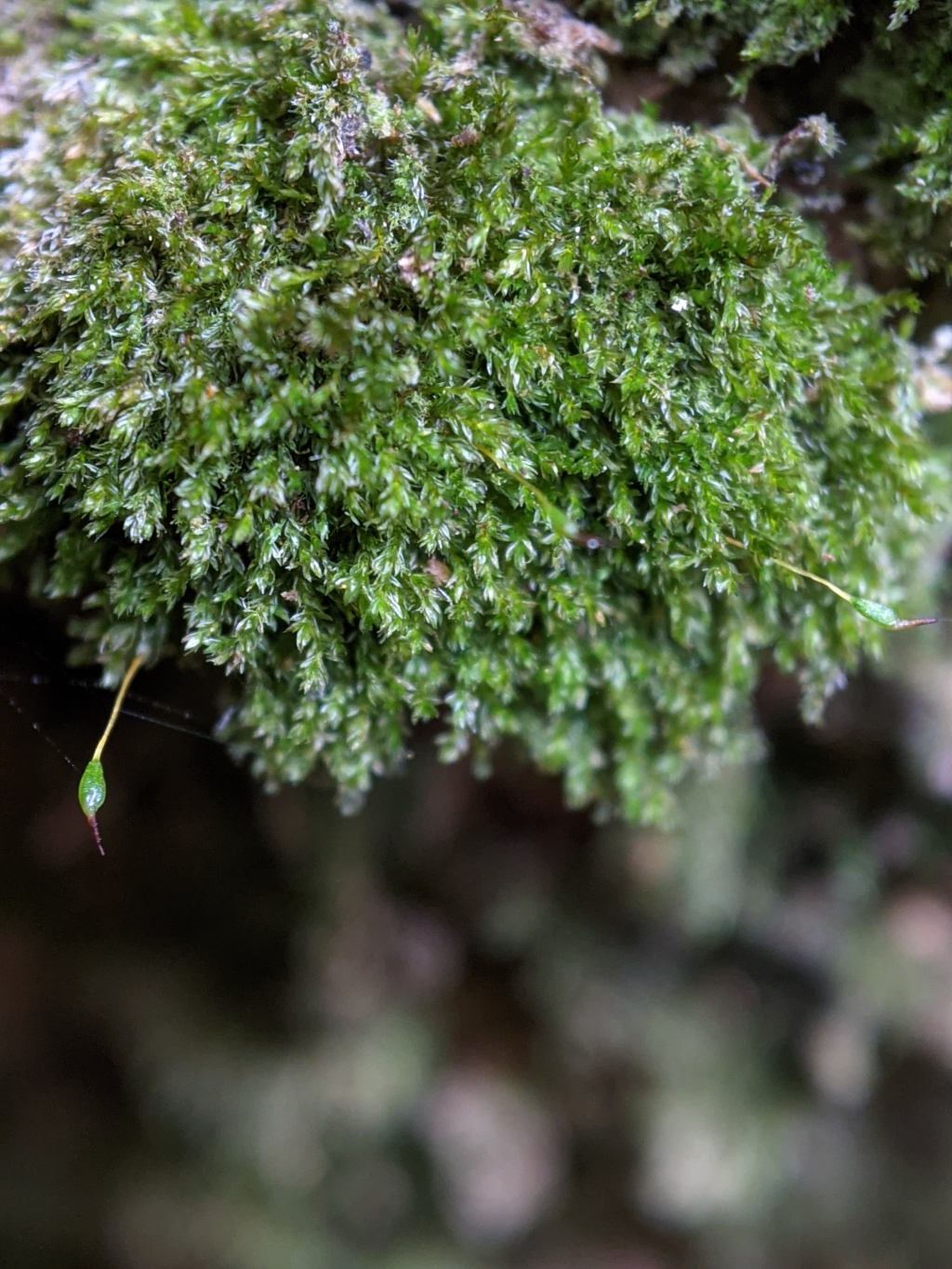Codonoblepharon menziesii
Schwägr.Dioicous. Asexual reproduction by filiform to clavate, 4–8-celled gemmae on stems or in leaf axils. Dense tufts on rocks or trees, to 10 mm tall, olive-green to dark green-brown. Stems branched, red-brown, with pale red-brown rhizoids extending up the stem. Leaves erect-spreading when moist, firmly twisted around stem or loosely twisted with a twisted apex when dry, lanceolate to ovate-lanceolate, 1–1.6 (–2.1) mm long, 0.3–0.5 (–0.7) mm wide, often carinate, or plane; apex acute or rounded acute; base not decurrent; costa ending below apex; margin entire, recurved to revolute in lower 1/3–2/3, without a border; laminal cells in apical half quadrate or rhomboidal, 5–12 μm long, 6–12 μm wide, smooth, abruptly transitioning to basal cells; basal cells rectangular, 20–45 (–60) μm long, 12–20 μm wide, smooth, forming a well-defined region extending c. 1/5–1/3 of leaf length. Seta 1.5–6 mm long, yellow, smooth, twisted anticlockwise. Capsules erect, ovoid to pyriform or cylindric, 0.8–2 mm long, straight, yellow or light brown, deeply ribbed along entire length when dry. Peristome double; exostome teeth 8 pairs, reflexed when dry; endostome segments 8 or 16, half the height of exostome. Operculum rostrate from conic base, 0.3–0.5 mm long.
GleP, VVP, GipP, OtP, WaP, CVU, GGr, NIS, EGL, EGU, WPro, HSF, HNF, OtR, VAlp. Widespread along and south of the Great Dividing Range, mostly in sclerophyll forest or coastal vegetation such as tea-tree thicket, but occasionally in rainforest.
 Spinning
SpinningSynonyms
Lewinsky-Haapasaari, J.; Ramsay, H.P. (2006). Zygodon, in McCarthy, P.M. (ed.), Flora of Australia 51, pp. 237–244. ABRS and CSIRO, Canberra and Melbourne.
